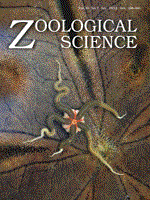As amniotes diversified, mammals may have modified mechanisms of cellular pluripotency along with the acquisition of a placenta. What then defined pluripotent states in the ancestral amniotes? To study the evolutionary background of pluripotency in amniotes, we tested the effects of extracellular effectors on primary culture cells from avian and reptile embryos in serum-free medium. When treated with a combination of a MEK inhibitor and a GSK3 inhibitor (2i condition), chicken early embryos formed domed colonies (DCs), which were morphologically indistinguishable from the colonies formed by mouse and rat naïve embryonic stem cells. However, no DCs formed when cells from further-developed embryos were cultured in the 2i condition, indicating that there is a clear boundary of DC-forming ability at around the stage of primitive streak elongation. Quail embryos at the blastoderm and cleavage stages also formed DCs in the 2i condition, which is consistent with the notion that the appearance of DCs corresponds with the presence of pluripotent cells in embryos. Gecko blastoderms also formed DCs in the 2i condition, but gastrulas did not. ERK activation by bFGF caused an effect opposite to that of the 2i condition, namely, it dispersed colonies of cells even from early embryos in all species examined. These results suggest that the regulation of pluripotency by FGF/ERK signaling may date back at least to the common ancestor of mammals, birds, and reptiles. However, gene expression analysis indicated the possibility that mammalian pluripotency transcription factors function differently in non-mammalian amniotes.
How to translate text using browser tools
1 July 2013
Inhibition of MEK and GSK3 Supports ES Cell-like Domed Colony Formation from Avian and Reptile Embryos
Shota Nakanoh,
Kenji Okazaki,
Kiyokazu Agata
ACCESS THE FULL ARTICLE

Zoological Science
Vol. 30 • No. 7
July 2013
Vol. 30 • No. 7
July 2013




